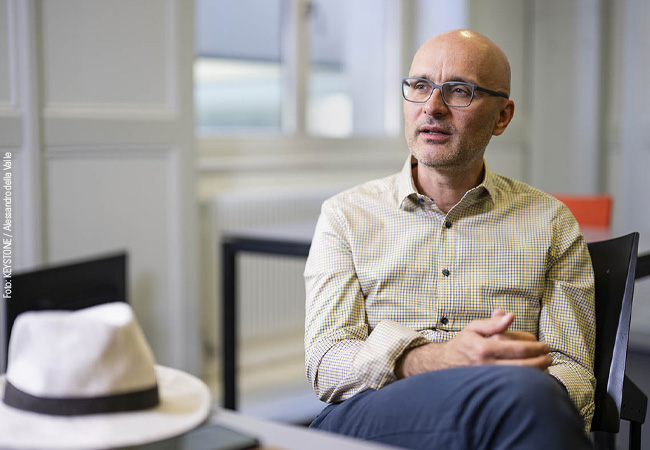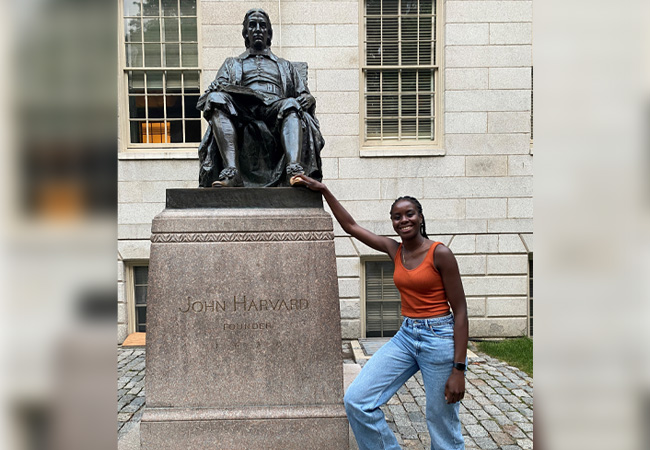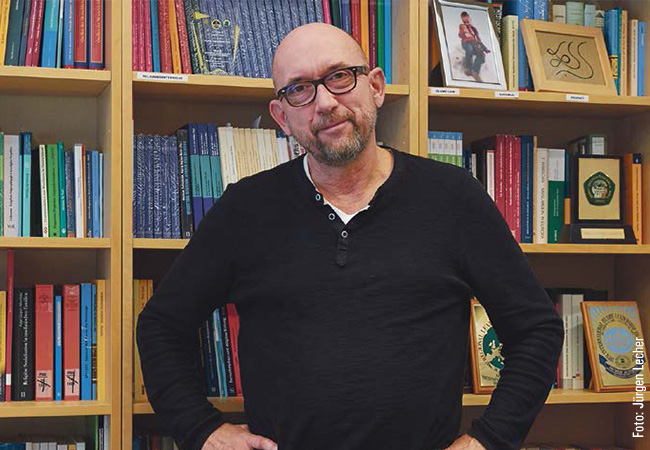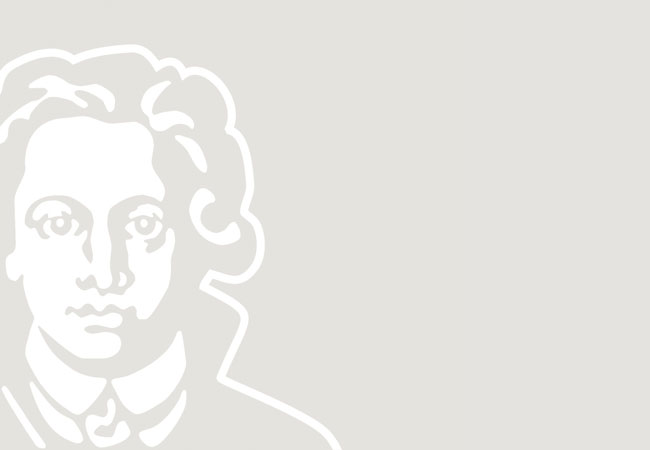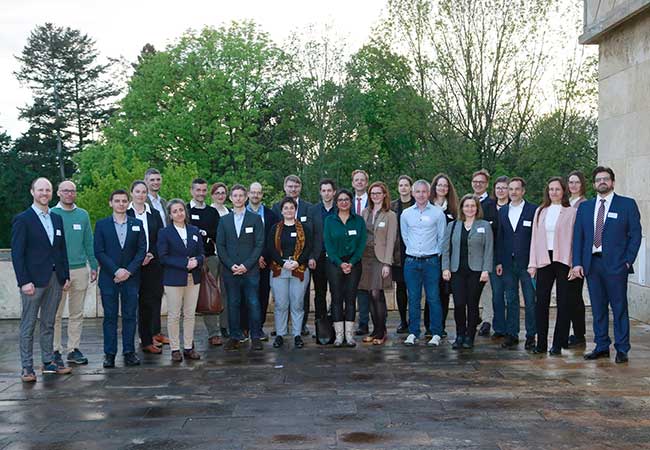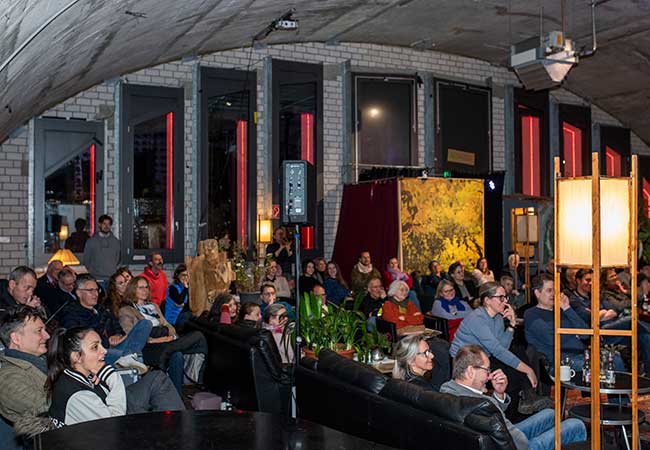Decoding microscopic and macroscopic effects together
1st Pillar: Theory & Simulation
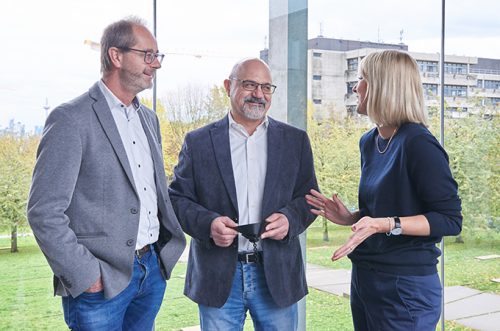

ELEMENTS is jointly led by Prof. Norbert Pietralla (Technical University of Darmstadt), Prof. Luciano Rezzolla (Goethe University Frankfurt) and Prof. Tetyana Galatyuk (GSI Helmholtzzentrum für Schwerionenforschung). Pictured here is their discussion of a model of two neutron stars colliding – an event during which considerable quantities of heavy elements are hurled into space. While Rezzolla simulates these macroscopic events based on Einstein’s theory of general relativity, other theorists in the cluster project are working at the microscopic level, including on the description of strongly interacting matter under extreme conditions.

As part of the ELEMENTS cluster project, physicists from a wide range of disciplines work closely together to research the formation of heavy elements in the universe. The only way to decipher the complex interplay of microscopic and macroscopic events is through this type of interdisciplinary collaboration. The ELEMENTS research project is based on three main pillars: theory, experiment and observation.
https://elements.science/
2nd Pillar: Experimental Physics
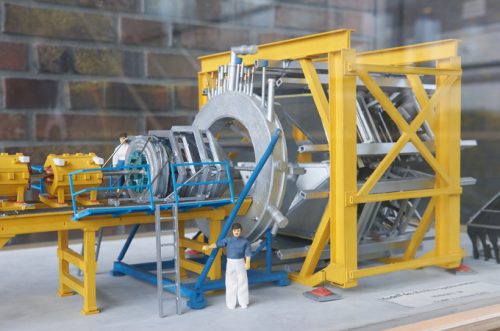
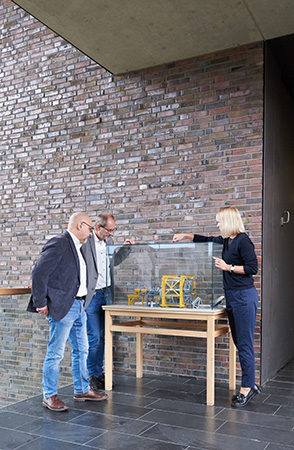
So-called heavy ion collisions are also investigated at the experimental level at ELEMENTS. Tetyana Galatyuk explains the model of the „HADES“ spectrometer (scale 1:20), used at GSI to study reactions with various heavy ion beams, such as gold. Using HADES, gold ions can be brought to collide at high speed with a gold target, producing hot and dense nuclear matter, whose properties can ultimately be determined by analyzing its „debris“.

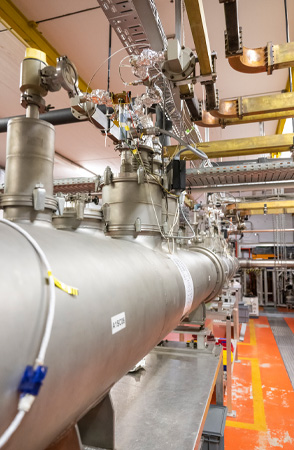
In contrast to the relatively heavy ions, at TU Darmstadt’s S-DALINAC the much lighter electrons are accelerated to almost the speed of light. Norbert Pietralla can use them to split the nuclei of atoms, enabling further conclusions to be drawn about the formation of heavy elements in the universe.
3rd Pillar: Astronomical Observations

Astronomical images constitute another piece of the puzzle in researching the formation of elements. Dr. Linda Lombardo and Prof. Camilla Hansen (both Goethe University Frankfurt) analyze the spectra of stars with a view towards drawing conclusions about the elements that are formed there. Pictured in the back is the „Very Large Telescope“ of the European Southern Observatory ESO in Chile, through which the data is obtained.
Phyllis Mania
Links:
Wenn die Schwerkraft Wellen schlägt | Aktuelles aus der Goethe-Universität Frankfurt
Materie am Limit | Aktuelles aus der Goethe-Universität Frankfurt
Mit recycelter Energie auf den Spuren schwerer Elemente | Aktuelles aus der Goethe-Universität Frankfurt
Das Very Large Telescope | ESO Deutschland
ExStra – The Excellence Strategy of the German Federal and State Governments‚
Goethe University Frankfurt is applying for the upcoming round of the Excellence Strategy of the German federal and state governments with four new clusters on the following research topics: Trust in conflict (ConTrust), infection and inflammation (EMTHERA), the origin of heavy chemical elements (ELEMENTS), and cellular architectures (SCALE). These applications bring together the competencies and pioneering ideas of Goethe University Frankfurt with those of colleagues in the Rhine-Main Universities (RMU) alliance and additional partners from four major non-university research organizations. The Cluster of Excellence “Cardio-Pulmonary Institute” (CPI), first set up in 2019, will submit a full proposal next year.
Photos: Stefanie Wetzel, S-DALINAC: Klaus Mai/TUDa, Simulation: Luciano Rezzolla


